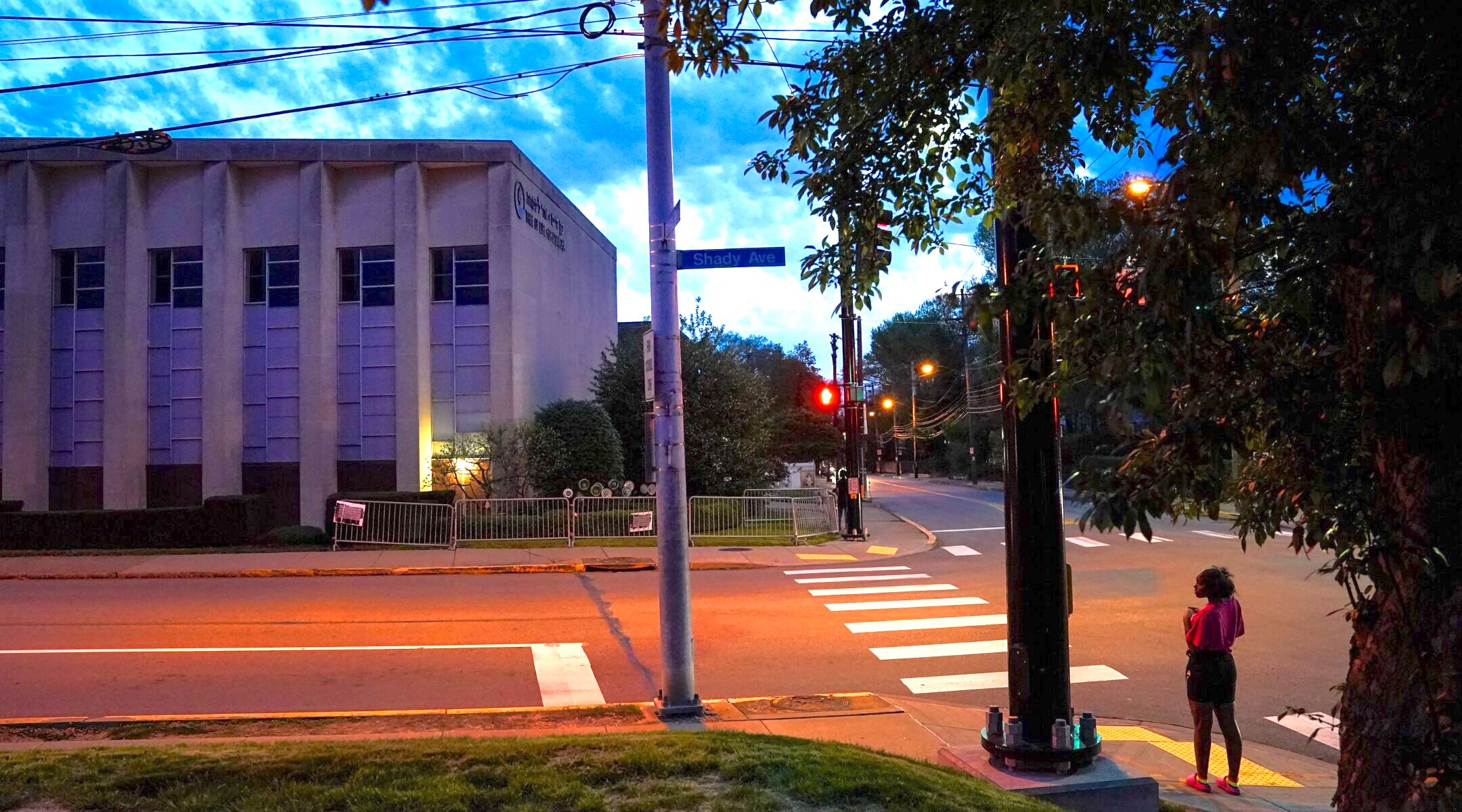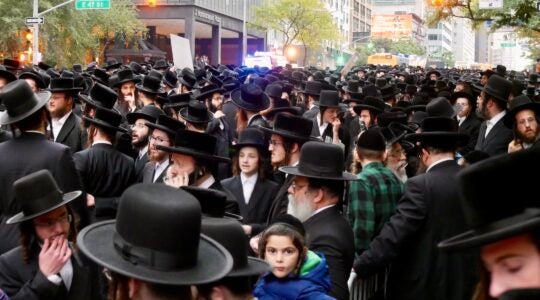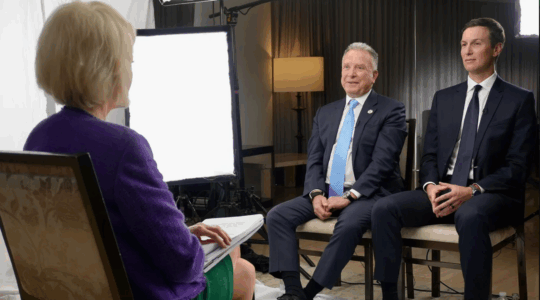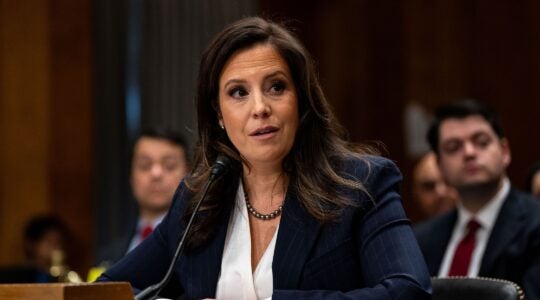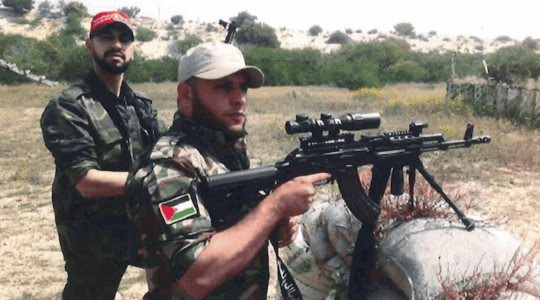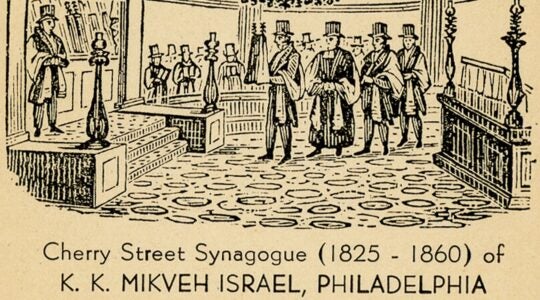PITTSBURGH (JTA) — The gunman who murdered 11 Jewish worshipers in a Pittsburgh synagogue did not suffer from delusions but was spurred by white supremacist radicalization, a storied forensic psychiatrist testified for the prosecution.
Park Dietz, who has for decades provided expert testimony in some of the highest profile insanity defense cases, took the stand on Monday for his second day of testimony in the federal trial of Robert Bowers, who committed the deadliest attack on American Jews in history on Oct. 27, 2018.
Dietz, a witness for the prosecution, countered defense testimony that the gunman suffered from schizophrenia and delusions. The defendant got his ideas about Jews, he said, not from his twisted imagination but from the antisemitic writings online that radicalized him.
“The difference” between himself and experts brought forward by the defense is “whether we regard the defendant’s beliefs as delusions on the one hand or subcultural beliefs on the other,” Dietz said Monday, the final day of the first part of the trial’s death penalty phase. His testimony began last Thursday.
The defense experts, Dietz said Monday, “simply mistook every ordinary widespread white separatist belief as delusions because they were not familiar with them.”
Dietz placed the crime in the context of decades of American right-wing extremism. “When you see this promoted for 20 years or 40 years, promoted in books and online forums, it is clear they are subcultura beliefs,” said Dietz, who examined the defendant in May for 15 hours.
Dietz, who has conducted substantial research on far-right extremism, said that the defendant’s thinking could be traced to a number of late 20th-century writings that have underpinned white supremacist ideology, including the “White Genocide Manifesto” authored in 1985 by David Lane — the leader of a white supremacist group called The Order who killed Jewish radio host Alan Berg.
“There were sources for all of this,” he said. “The ‘White Genocide Manifesto’ was the principal one from which much of this flows.” He also cited the “Great Replacement” theory, which posits that Jews are organizing mass immigrations of people of color into western nations to replace whites.
Replacement theory, which has gained significant traction in right-wing media and politics in recent years, has inspired multiple antisemitic and extremist attacks, including the 2019 attack on a New Zealand mosque that killed 51 and the 2019 massacre at a Texas Walmart that targeted Hispanic immigrants.
Dietz is the final witness in the first part of the death penalty phase, which mostly has focused on whether the gunman’s intent meets the requirement for the death penalty. If the jury determines that the crimes meet that threshold, the second phase will consider the defense’s arguments that mitigating factors in the shooter’s life make him ineligible for the death penalty. The prosecution would be expected to present victim impact statements in that phase.
The federal jury of five men and seven women found the defendant guilty of all 63 government charges on June 16, including 22 capital charges — two for each of the 11 slain at the Pittsburgh synagogue complex known as Tree of Life.
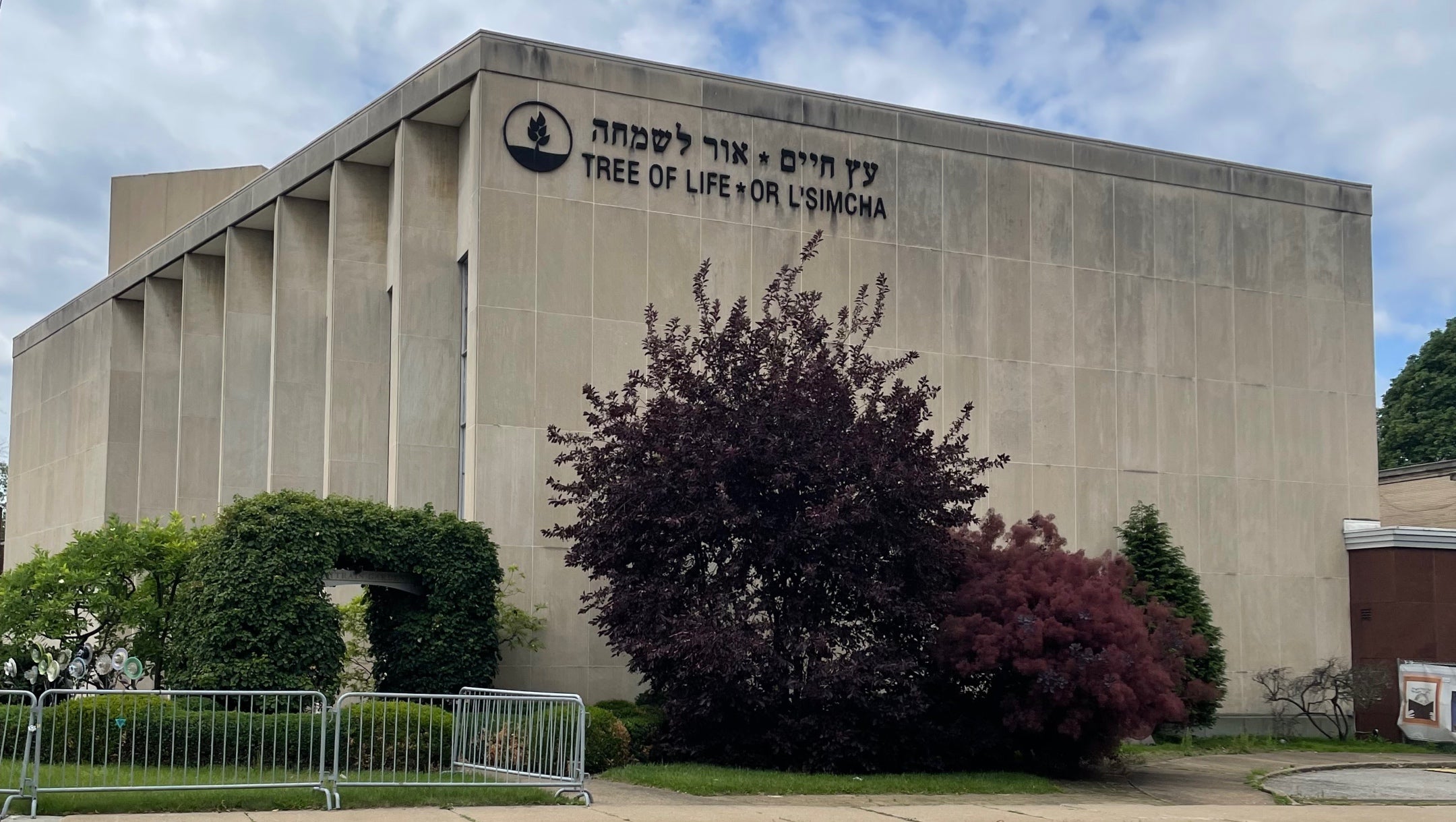
The Tree of Life synagogue in Pittsburgh, June 26, 2023. (Ron Kampeas)
The defense has sought since the launch of the death penalty phase on June 26 to show that the gunman’s beliefs about Jews were delusions caused by schizophrenia and epilepsy.
Dietz, under cross examination by defense lawyer Michael Burt, was immovable: He said the defendant did not have an original thought that would qualify as a delusion. “The entire area of disagreement in this case, is does he have delusions or not,” he said. “That’s the critical fulcrum in this case.”
Dietz added, “I’m talking about his white supremacist and antisemitic beliefs — those are all fixed,” he said.
The defendant, Dietz said, remained unrepentant. His regrets included not bringing more ammunition into the building, calculating that he would head to another location after committing the massacre at Tree of Life. The second intended target is believed to be the Jewish Family and Community Services office, which was nearby.
Another regret, the defendant told Dietz, was that “there wasn’t dozens of dozens more in there” when he arrived at the synagogue that Saturday morning.
The gunman was proud nonetheless of the number of Jews he did kill, Dietz said. “They can kill me” with the death penalty, Dietz quoted the defendant as saying, “if they want but the score will still be 11-1. That’s not winning the war but I won that battle.”
The gunman was proud that his handling of the ammunition was “flawless” and said he remained focused throughout the shooting. He told Dietz one moment of near-sympathy for his victims, a man who he shot in the head and who spoke as he lived on for a second or so.
“I never heard a single person say a word except for one man who was slumped over and said ‘I think I’ve been seriously injured,’” Dietz quoted the gunman as saying of that victim, who was not identified. “I almost felt sorry for him.”
The defendant, clad in a gray sweater and a collared shirt, did not look at Dietz, preoccupying himself as he has until now with writing notes.
The shooter targeted Tree of Life because one of three congregations in it, Dor Hadash, partnered with HIAS, the Jewish immigration advocacy group, in sponsoring refugee families. Dietz testified that the shooter at first intended to target only Dor Hadash but after hearing newscasters whom he believed to be Jewish express sympathy for immigrants, he decided “a Jew is a Jew.”
Dietz, a forensic psychiatrist at UCLA’s medical school, has evaluated defendants including John Hinckley, who attempted to kill President Ronald Reagan; mass murderer Jeffrey Dahmer and Unabomber Ted Kaczynski, among many others. He also is listed on the Internet Movie Database as a consultant on hundreds of episodes of “Law and Order” and its franchises.
Burt, in his cross examination, appeared to anticipate arguments the defense will bring should the trial continue to the second death penalty phase. He asked Dietz to assess the defendant’s likelihood of suffering mental illness because of trauma. Dietz agreed with Burt that the gunman had suffered some of the requisite traumas, including losing his father to suicide and being raised by an alcoholic and neglectful mother.
This story is part of ongoing coverage of the Pittsburgh synagogue shooting trial. Parts of the story are based on reporting by the Pittsburgh Jewish Chronicle and the Pittsburgh Union Progress in a collaboration supported by funding from the Pittsburgh Media Partnership.
JTA has documented Jewish history in real-time for over a century. Keep our journalism strong by joining us in supporting independent, award-winning reporting.
